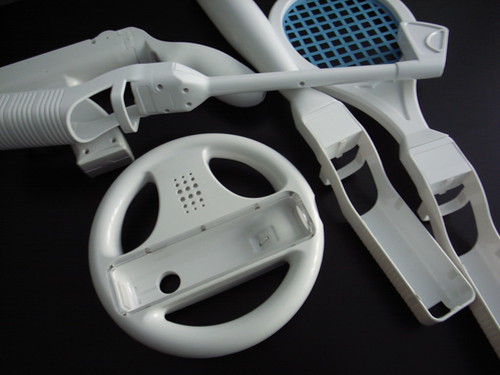 It seems that we finally have some good research material about the user experience of the Wii. Working on this topic for two years for a client, I was amazed by the lack of paper concerning how players use the Nintendo console and its gestural interaction devices. It seems that "Wii All Play: The Console Game as a Computational Meeting Place by Amy Voida & Saul Greenberg is a good step towards the understanding of Wii UX.
It seems that we finally have some good research material about the user experience of the Wii. Working on this topic for two years for a client, I was amazed by the lack of paper concerning how players use the Nintendo console and its gestural interaction devices. It seems that "Wii All Play: The Console Game as a Computational Meeting Place by Amy Voida & Saul Greenberg is a good step towards the understanding of Wii UX.
The paper reports the results of a field study that focused on examining collocated group behavior. What is interesting here is the analysis of console gaming as a "computational meeting place for a diverse population of gamers": a family entertainment device of some sort. The main claim of the paper, supported by results from the field study lies in showing that what makes video-game fun is not the game itself but the "sociability that surrounds the gameplay".
I won't enter the result details, but the paper shows the different roles the console has in being "a meeting place":
"Console games serve as:
- a meeting place for social interaction
- a meeting place with porous boundaries
- a meeting place for gamers with varied levels of expertise
- a meeting place for gamers with varied preferences for gaming genres & styles of gameplay
- a meeting place between interpersonal relationships and the competition of gameplay
- a meeting place between gaming and its stereotypes, and
- a meeting place between adults-as-parents and adults-as-gamers"
The paper describes each of these roles by showing various examples. Any interested reader should read them btw, things such as "Anything electronic I would do" are gems!
The part about design recommendation is also highly worthwhile, see some excerpts:
"Games designed to provide a meeting place for groups of gamers should undertake some combination of the following:
- Allow gamers to rotate in and out of the gameplay easily
- Make use of input devices with intuitive mappings (button-based input devices were less well-liked by the gamers in this study than gestural and physical input devices)
- Combine a shallow learning curve for novice gamers with more challenging gameplay for more expert gamers
- Provide modes of gameplay that allow players with different skill levels to play with or against each other
- Explore modes of gameplay that alter the game in significant ways for different groups of players so that the owner of the console or the game does not always have an advantage
- Provide modes of play that downplay competition between players (e.g., fostering non-serious competition or competition between the gaming group as a whole and the computer)
- Appeal to gamers with different gaming preferences within a single game (e.g., by offering compelling gameplay for a gamer who is typically drawn to strategy games while also appealing to other gamers who may be drawn to games with more challenging puzzles or immersive stories)
- Foster audience participation or an otherwise enjoyable audience experience
- Explore ways of extending the social experience of group console gaming into the larger ecology of shared media."
Why do I blog this? lot of material here for a new research vector about the Nintendo Wii. I am really glad to have found a reference about this topic. Will try to accumulate material about this before hiring an intern to help on this. Plus, I like the message here, about the "computational meeting place", well-supported by the data analysis.